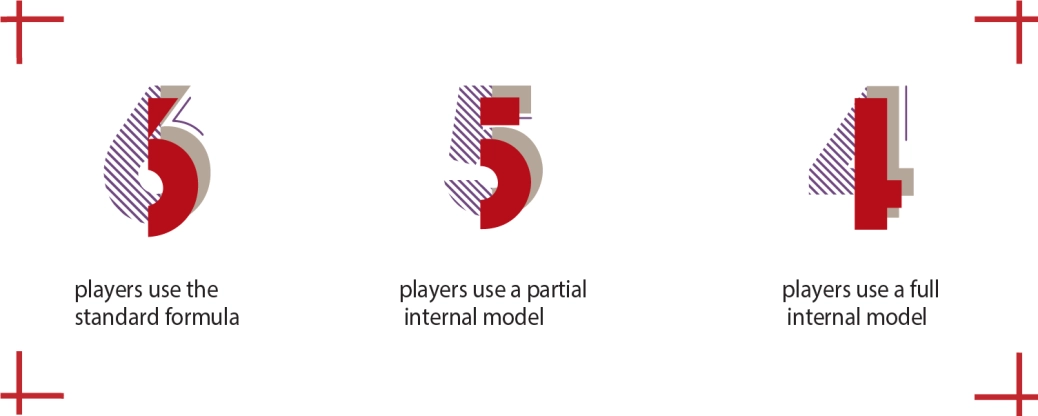
Analysis of the Solvency and Financial Condition Reports of European Insurance and Reinsurance Entities
This directive introduces new requirements for the calculation of the solvency ratio based on an assessment of the economic value of own funds and the entity’s capital needs, along with requirements for governance and risk management. These new quantitative and qualitative requirements are accompanied by strengthened rules for quarterly and annual reporting intended both for the regulator and for the general public.
The distribution of the entities by model used to calculate the SCR is identical in 2016 and 2017
In order to provide increased transparency in the market, the directive requires the annual public disclosure of a solvency and financial condition report (SFCR) which must cover the business of the undertaking, its system of governance, its risk exposure and information on valuation methods and capital management.
In this context, we have considered the reports published by a sample of 15 European entities and have conducted a comparative study of the 2017 and 2016 information, based on an analysis of the following points:
- What level of detail has been provided on solvency indicators?
- What is the coverage ratio of the regulatory requirement in the different entities?
- What information is provided on capital needs, and what observations emerge from the breakdown of the SCR (Solvency Capital Requirement) by risk.
- What methodologies are applied to measure assets, technical provisions and own funds?
- Who uses an internal model and what information is provided on the particular methodologies applied?
- What comments could be made on the structure of own funds?
- What sensitivity analyses have been published?
- What information has been expanded by comparison with the first SFCR?
Finally, and where appropriate, we have supplemented our analysis with the information available in the public Quantitative Reporting Templates (QRTs) that are generally provided in annex to the SFCR.




